Nanocosmology
 |
| Hexagonal pattern shapes in galaxy IC 342 |
GRAPHENE and BUCKYBALLS inside CARBON NANOTUBES - COMMON ABUNDANT CARBON ATOMS have INCREDIBLE IMPLICATIONS for cosmology : The known visible matter mass fraction content of the Milky Way galaxy is 74% Hydrogen, 23% HElium, 1% Oxygen, and 0.46% Carbon. Heavier elements greatly influence astronomical phenomena. Carbon is the fourth most abundant element in the Universe. 2% of the milky way's mass is in heavy elements, mostly in the disk. Stars in the galactic halo have very little heavy elements of C, N, and O. The mass ratio of Hydrogen Atoms to Carbon Atoms is shockingly influential at 150 to 1 in our galaxy, considering how graphene organizes electric and magnetic fields in outer space. Exobiology and Cosmology Implications: (1) Water becomes liquid forming clusters and beads near absolute zero temperature by contacting carbon nanotubes. (2) Graphite Dust + CO + H ---> (yields) Carbon Nanotubes . (3) Graphene Nanobubbles likely fills outer space, and GRAPHENE UNDER STRAIN CREATES INCREDIBLY STRONG MAGNETIC FIELDS. (4) Electrons in vacuum near absolute zero like in outer space move at increasingly higher speeds in earth labs on GRAPHENE in ways that MIMIC THE MOVEMENTS OF PHOTONS. NASA's Spitzer telescope has only just RECENTLY been able to detect these carbon molecules using NEW technology. These Carbon structures have EXTRAORDINARY PROPERTIES and are : (1) Formed in Common Supernovae WINDS (Magnetic Fields - Bubbles). (2) Extremely stable, strong, flexible, elastic, tensile, transparent, and easily formed by a wide variety of ways. (3) Very good Electrical CONDUCTORS that DISSIPATES HEAT and are TRANSPARENT. The Paper states C60, C70, and Planar C24 Graphene Detections appearing as small fuzzy blobs in the Magellanic Cloud Planetary Nebulae. Stanghellini says "the existence of these molecules does not depend on the stellar temperature, but on the strength of the WIND SHOCKS." "Collisional shocks generated in stellar winds of planetary nebulae (supernova magnetic fields) could be responsible for fullerenes and graphenes." BUCKYBALLS were discovered in the Magellanic Clouds in 2010, which sprung a huge rebuttal against Dark Matter Gravitational Forces for what are Electromagnetic Forces in outer space vacuums. The EM forces of these commonly abundant Carbon molecular structures in outer space, can far better and more easily explain away black holes, and fictional gravitational forces attributed to phony dark matter attached filamentary components. 1 atom thick filamentary graphene sheets are known grown up to 5 inches thick. Graphene DOES NOT HAVE VOLUME, ONLY SURFACE. Its STRUCTURE IS EXPOSED TO ITS ENVIRONMENT, responding to ANY molecule that contacts it. When graphene contains combined polymers its electrical properties are precisely organized by LIGHT. The polymers keep informational memory of light and the graphene retains its modified properties. The informational memory can only be erased by heating. Black holes have similar volume to surface area equation relationships as quantum dots formed from graphene.
Black Hole Laser Beams transform Graphene into Buckyballs Black Hole LASERS form BUCKYBALLS Black Hole LASERS form BUCKYBALLS |
| Fractal point entity Buckyballs compose spinning one dimensional single atom thick Graphene Nanotubes that thrive in the EM Fabric Vacuum of Outer Space, carrying flowing electric currents and having moving high speed electrons, that produce vast sized magnetic fields of incredible strengths. |
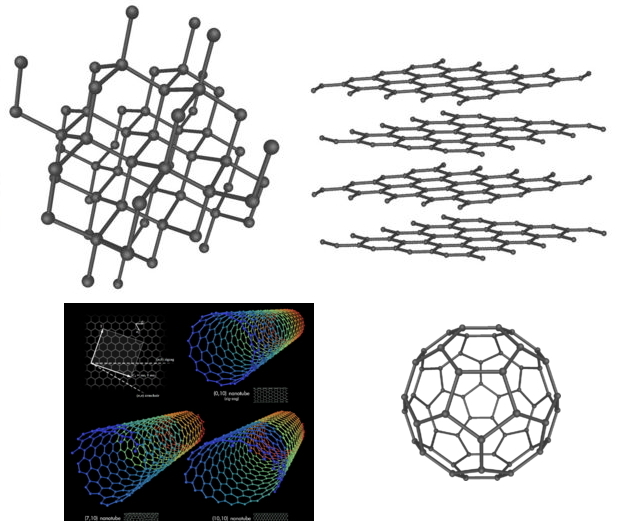 Dimensionality of Carbon Atoms Dimensionality of Carbon Atoms |
| Three dimensional covalent network structure of Diamond, Two dimensional covalent plates of graphite, One dimensional single wall tubes of carbon nanotubes, and Zero dimensional point entities of C60 Buckyballs on the millimeter scale. Between the integer 0d, 1d, 2d, and 3d, there are fractional and fractal dimensions. |
 The Fractal Filamentary Cosmic Web of Filaments is very likely the result from the properties of graphene. The Fractal Cosmic Web of Filaments contains the newly detectable transparent flexible Graphenes and Carbon Nanotubes of larger thicknesses, organizing cosmic scale electric and magnetic fields.
The Fractal Filamentary Cosmic Web of Filaments is very likely the result from the properties of graphene. The Fractal Cosmic Web of Filaments contains the newly detectable transparent flexible Graphenes and Carbon Nanotubes of larger thicknesses, organizing cosmic scale electric and magnetic fields.  |
| Cyclotron electron orbits in multilayer graphene produce galaxy phenomena |
Hannes Alfven said the spiral arms of galaxies carry electric currents. Spinning spiral arms wrap in and around the galactic disk, where most stars form and are located, and which is roughly 2% heavier elements by composition. Electric currents carried through interacting shape transforming graphene nanotubes in the spiral arms, produce vast strong magnetic fields in the outer halo regions of galaxies. Supernovas form quantum dot black holes, when increasing electric currents in the spiral arms of galaxies are forming protostars. Galaxy halos of theoretical dark matter, are likely these regions where these magnetic field bubbles surround the galaxy.
Carbon Stars form like beads on strings, and plasma knots form Birkeland currents that convert light into electricity, connecting galaxies to construct the filamentary cosmic web of the Universe by the properties of carbon nanotubes.

Single-stranded DNA and carbon nanotubes are chemically compatible and readily self-assemble into DNA-carbon nanotubes hybrids, including helical wrapping. DNA spontaneously binds to carbon nanotubes by attractive interactions between the DNA BASES and the nanotube sidewall.
Graphene can be turned into complex structures by simply placing NANODROPLETS OF WATER on its surface, says Patra. Water nanodroplets wrinkle graphene sheets, making them more pliable. Complex structures can be obtained, including knots, rings, and other formations through rapid bending, folding, sliding, rolling, and zipping of the material.
Zhao - Self-assembly of DNA Segments on Graphene and Carbon Nanotube Arrays in Aqueous Solution Water
Gravity dark matter scientist Crowell at Universetoday.com writes "GRAPHENE SHEETS COULD PLAY THE ROLE OF SOME PRIMORDIAL RIBOSOME IN OUTER SPACE. A GRAPHENE SHEET OR BUCKYBALL TUBE WOULD ATTRACT NUCLEOTIDES AND PREFERENTIALLY PAIR UP WITH THE APPROPRIATE BASE PAIRS." Fullerenes were common on the very early earth. Many complex metabolites are like graphene sheets and fullerone walls at the core by guing CH(ON) rings."
 Electron Flow MAGNETISES Graphene : Spin-Orbit interactions are MAGNETIC FIELDS created by nuclei that affect the motion of electrons. SPIN & CHARGE are interconnected when even a weak magnetic field is applied to graphene, that causes an electron flow of spins in the perpendicular direction to the ELECTRIC CURRENT. The MAGNETISM EXTENDS OVER MACROSCOPIC DISTANCES FROM THE ELECTRIC CURRENT PATH WITHOUT DECAY.
Electron Flow MAGNETISES Graphene : Spin-Orbit interactions are MAGNETIC FIELDS created by nuclei that affect the motion of electrons. SPIN & CHARGE are interconnected when even a weak magnetic field is applied to graphene, that causes an electron flow of spins in the perpendicular direction to the ELECTRIC CURRENT. The MAGNETISM EXTENDS OVER MACROSCOPIC DISTANCES FROM THE ELECTRIC CURRENT PATH WITHOUT DECAY.
Gravitational forces are pseudo-real and decay in strength with distance. Galaxy Jets having vast electric currents are perpendicular to the galactic disk containing carbonaceous matter. Carbon rich chondritic interplanetary dust particles comprise 60% of the total interplanetary dust particles, and are classified by the diminishing degrees of oxidation. An infrared 9.7 micrometer emission silicate signature is observed for cool evolved oxygen-rich giant stars. An infrared 11.5 mm emission CARBIDE SIGNATURE is observed for cool evolved CARBON-rich giant stars. Graphite grains are most common as are low mass stars in the universe. Silicon carbide is observed with red giant winds, and carbon for low mass stars. Ferromagnetism (similar to Bubble Universes) would result if the vacancies in graphene are arranged in the right way. Multiverse nucleation bubbles analogous in ways to ferromagnetism are oriented by applying a cosmic scale magnetic field.
 Gated BILAYER GRAPHENES : Plasmons crowd together EM light waves into nanoscale dimensions, trapping and confining light as an explanation for inferred unobserved black holes in galaxies. Plasmonics in bilayer graphene are even more pronounced than in monolayer graphene. Plasmons are collective oscillations of electrons. Magnetic bubbles appearing much like the milky way's are perpendicular to the galactic disk of carbonaceous material. Graphene plasmonics involves nanoribbons and nanodisks. The central plasmoid inwardly consumes the nanodisk.
Gated BILAYER GRAPHENES : Plasmons crowd together EM light waves into nanoscale dimensions, trapping and confining light as an explanation for inferred unobserved black holes in galaxies. Plasmonics in bilayer graphene are even more pronounced than in monolayer graphene. Plasmons are collective oscillations of electrons. Magnetic bubbles appearing much like the milky way's are perpendicular to the galactic disk of carbonaceous material. Graphene plasmonics involves nanoribbons and nanodisks. The central plasmoid inwardly consumes the nanodisk. BUCKYBALLS FORM QUANTUM DOTS. QUANTUM DOTS HAVE AN ENERGY GAP THAT SCALES INVERSELY WITH THEIR SIZE. The smaller the dot, the larger its ENERGY GAP. Black holes are quantum gravity singularities. Hawking's equation shows that the temperature of a black hole is inverse to its size. Temperature and Energy Gap relationships makes identical analogue equations.
BUCKYBALLS FORM QUANTUM DOTS. QUANTUM DOTS HAVE AN ENERGY GAP THAT SCALES INVERSELY WITH THEIR SIZE. The smaller the dot, the larger its ENERGY GAP. Black holes are quantum gravity singularities. Hawking's equation shows that the temperature of a black hole is inverse to its size. Temperature and Energy Gap relationships makes identical analogue equations.  RIBOSOMES ARE THE FUNCTIONAL EQUIVALENT OF A CARBON NANOTUBE. The Milky Way's 100 parsec elliptical twisted ribbon ring of cold dense molecular clouds located near the DISK is oriented perpendicular to the major axes of the Galactic Bar, appearing to trace the system of stable X_2 orbits predicted for the barred Galactic potential. Recently found by Herschel, it's origin is a puzzling mystery. Could it be part of a larger scaled fractal dimensional ribosomal strand, comprising a huge cell, common virus, or a living entity being? DNA strands are twisted rings of filamentary structures.
RIBOSOMES ARE THE FUNCTIONAL EQUIVALENT OF A CARBON NANOTUBE. The Milky Way's 100 parsec elliptical twisted ribbon ring of cold dense molecular clouds located near the DISK is oriented perpendicular to the major axes of the Galactic Bar, appearing to trace the system of stable X_2 orbits predicted for the barred Galactic potential. Recently found by Herschel, it's origin is a puzzling mystery. Could it be part of a larger scaled fractal dimensional ribosomal strand, comprising a huge cell, common virus, or a living entity being? DNA strands are twisted rings of filamentary structures.Carbon Nanotubes propel cold atoms to spiral around an atomic black hole like stars orbiting the center of a galaxy.
NASA "BLACK HOLE" Carbon Nanotube coating absorbs 99% of all UV, Visible, IR, and far IR LIGHT Radiation that strikes it. Galactic black holes are merely inferred theoretically and mathematically impossible to exist. Phenomenal black holes are aligned carbon nanotubes and 3D buckyballs that capture light, and convert it into electricity like solar cells. Galactic jets carry electric currents. EM Cosmology.
 Electrons (blue) and Positive charged Holes (red) are bound together in a mutual orbit to form an EXCITON that converts light into electricity extremely efficiently in carbon nanotubes. A nanotube is an ideal PHOTOVOLTAIC SOLAR CELL that converts light into electricity and that multiplies the amount of electrical current that flows. Charge separation is how anti-matter forms, and how matter acquires mass analogous to charge. Electrons tunnel across gaps and travel jump faster and farther distances inside carbon nanotubes, and better explains these facts to model galaxy centers without unobserved black holes warping space and time and required worms holes.
Electrons (blue) and Positive charged Holes (red) are bound together in a mutual orbit to form an EXCITON that converts light into electricity extremely efficiently in carbon nanotubes. A nanotube is an ideal PHOTOVOLTAIC SOLAR CELL that converts light into electricity and that multiplies the amount of electrical current that flows. Charge separation is how anti-matter forms, and how matter acquires mass analogous to charge. Electrons tunnel across gaps and travel jump faster and farther distances inside carbon nanotubes, and better explains these facts to model galaxy centers without unobserved black holes warping space and time and required worms holes.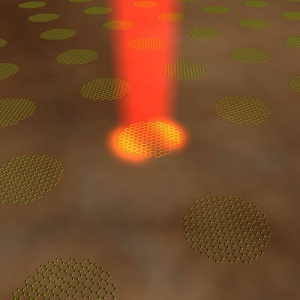 Javier Garcia de Abajo says a nanoscale disk with an array of graphene quantum dots or sufficiently strong oscillators such as metallic nanoparticles, could perfectly absorb 100% of the light hitting it from all directions when the light frequency matches the plasmon frequency. By changing the geometrical arrangement of the graphene structures, or by adding electrons either electrically or chemically, the frequency can be adjusted and changed. Some galaxies are known to have 3d geometric shapes when aligned oriented precisely with a observation location, because graphene based metamaterials are doing what phony black holes were devised to be doing. Javier Garcia de Abajo says a nanoscale disk with an array of graphene quantum dots or sufficiently strong oscillators such as metallic nanoparticles, could perfectly absorb 100% of the light hitting it from all directions when the light frequency matches the plasmon frequency. By changing the geometrical arrangement of the graphene structures, or by adding electrons either electrically or chemically, the frequency can be adjusted and changed. Some galaxies are known to have 3d geometric shapes when aligned oriented precisely with a observation location, because graphene based metamaterials are doing what phony black holes were devised to be doing. |
| Graphene nanoscale disk is perfect black hole absorber |
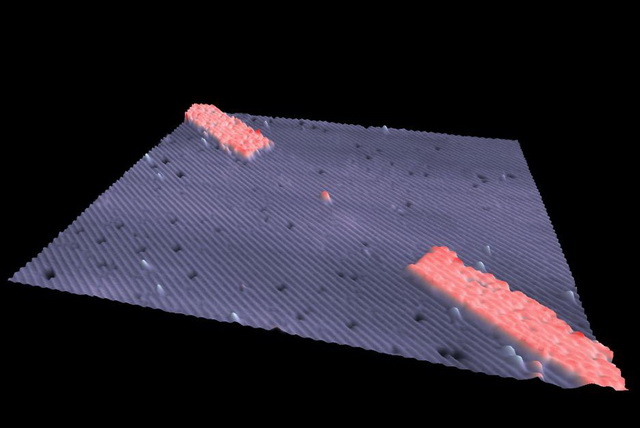  |
| ambient heat energy converted into electricity with graphene device. |
Xu has built a graphene battery device that runs for 20 days on nothing but ambient heat, converting thermal energy of the environment into electricity. The electric current increases when heated to higher temperatures. Other scientists have already generated electric current in graphene simply by moving water over it. When an ion contacts graphene, it loses an electron that follows a route through the circuit lighting up the LED.
Simple heat energy can be converted into electricity when charged ions in an aqueous solution environment contact graphene. In outer space high temperature PLASMA IONS contacting common buckyballs, nanotubes, and graphenes, must be involved in converting heat into cosmic scale electric currents that shape galaxies throughout the universe. Plasma is a good conductor of electricity, and comprises 99.9% of the universe. Stars and galaxies are 99.9% plasma. Vast electric currents have been measured in galactic jets, and these jets emanate from theoretically phony unseen inferred black holes. It becomes growingly obvious with innumerably new discoveries about graphene, that commonly abundant graphenes, dots, and buckyballs are important in absorbing light like black holes, and converting heat energy into galactic jets carrying electric currents.
Squeeze, twist, or bend graphene to get electricity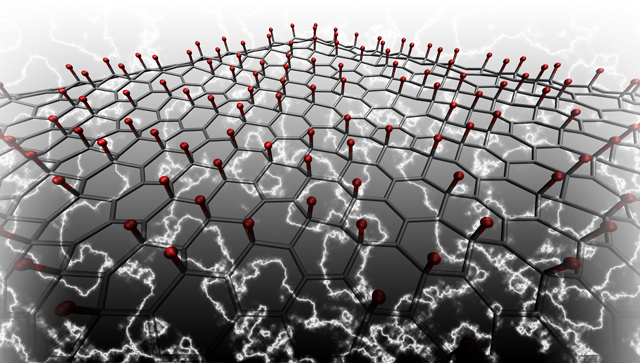 |
| Straintronics of piezoelectric graphene deforms the shape of the carbon lattice directly proportional to the electric field applied. Piezoelectric magnitudes of 2D graphene are comparable to 3D piezoelectric materials by the selective surface absorption of atoms on graphene. Excitons in carbon nanotubes |




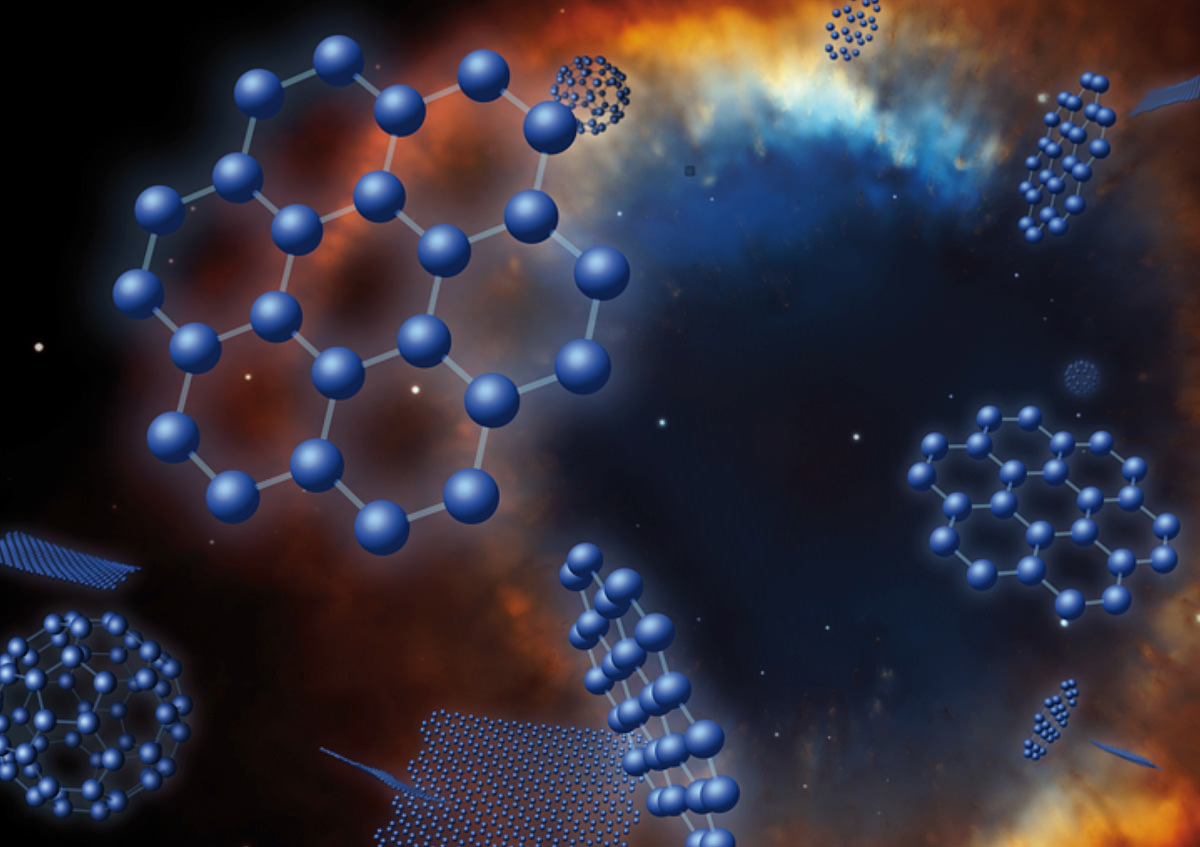



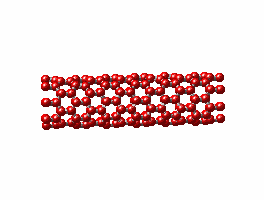





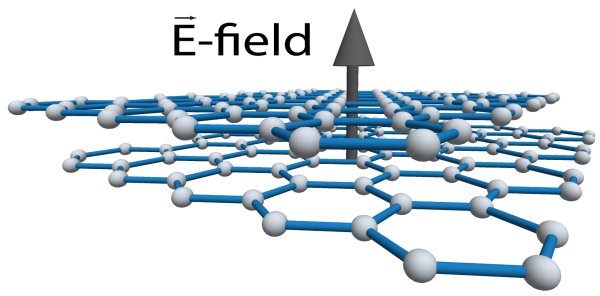








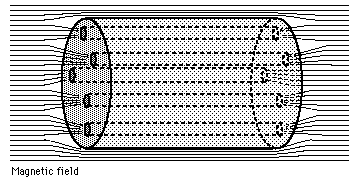
No comments:
Post a Comment